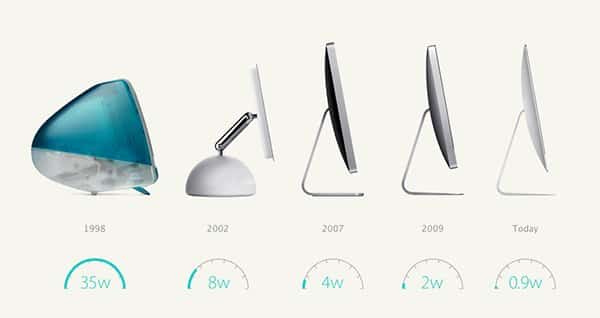10 Success Factors for the Experience Design Process
Experience design (or “user experience design”) aims to improve the usability and accessibility of the digital or physical product and thereby create a pleasant and effective experience while using the product and hence a satisfied user. This requires more than just focusing on the aesthetics or the layout of the application design. A successful experience design process should extend the form and the function of the product, focus on various user-related aspects, and keep developing and improving the user experience over time. Therefore, a successful experience design process should merge three main principles that are proved to achieve success in the experience design process; the process must be user-centered, holistic, and progressive. In this article, we will try to shed light on these three principles and other related factors.
While this article explores the factors that can contribute to a successful experience design process, we should indicate that is no specific guide or rule book for the good experience design; it is an experimental process and varies from one user segment to another. However, a number of user-experience related aspects are observable in most successful products and brands. While these aspects may apply to one type of product or user, they may not apply to another. Therefore, these factors should be taken as a guide to improve the user experience design process and they should be adapted to different product design circumstances.
1. Experience Design is User-Centered
Experience design is a user-centered process that aims to put the user at the heart of the design process. Therefore, experience design should be based on a solid understanding of the users’ needs and existing experience. This understanding can be obtained through a user experience research process. The results of this research help designers to build both the form and function of the product to address users’ needs. Users are expected to have a seamless experience when using the product, and this can be achieved by following existing, commonly used design patterns that minimize the effort and learning required to use the product.
One of the common examples of user-centered design is IKEA products. The philosophy behind IKEA products is to achieve five main targets: form (beautiful product), function (usable product), quality, sustainability, and low price. These five factors contribute to a product that meets common consumer needs. Our Guide to IKEA’s Sustainable Design Strategy highlights the design process at IKEA in more detail.

2. Keep it Simple
Experience design should value simplicity and clarity during the user journey while using the product. It doesn’t necessary require that the design should be very simple, but the design should be clear and users should be able to easily navigate through the design and reach all features with minimal effort. Of course, simplicity is also expressed by the phrase “less is more”. Part of the experience design is to focus on the users’ needs to reduce distraction from unnecessary functions and elements in the design layout. An example of simple design is Apple products which target simplicity and include users’ most wanted functions in their products while further, less commonly desired functions can be added to different levels of the applications or installed in the form of third party applications. Check How Does Apple’s Design Process Work?

3. Experience Design is Progressive
Many designers tend to believe that users should have a full expertise in the product before using it, which may hinder their ability to innovate or provide the new experience. The aim of the experience design is to provide a seamless user experience while using the product, which is a progressive process. Users start to experience the product or application and explore it based on two factors: their previous experience and the communication between the product and the use, as we will explore in the next principle. There is a correlation between progressive experience and disruptive innovation. While developing products based on existing design patterns, disruptive innovation may address new ideas and new patterns. When Apple started to introduce their iPhone as and disruptive innovation, users progressively started not only to get used to the new operating system and interface, but also to admire and love it just like other Apple products.

4. Build Communication
As I keep highlighting in my lectures, designers should consider the continuous communication between the design and user. This communication is the core of the experience design and it should exist during the user journey while using the application. This dialog between users and the design is based on three main channels:
- Feedback. This refers to both visible and invisible messages that are sent to the user while using the product. For example, the red color of the power button provides a hidden message for users that this button switches the product on. An example of the visible feedback is when entering incorrect login information in a website and the design layout sends feedback in a form of an alert message to the user to correct the login information.
- Social. This refers to giving the ability for users to communicate from within the product with other people or other applications. For example, when users install an application or game, they can share their progress with their followers/friends on different social networking websites such as Facebook, Twitter, Instagram, and others.
- Connect with other services. This refers to the ability to build communication between the product or application and other applications. For example, users can open their Dropbox backup files in other applications such as iBooks. In physical products, this connection can be strongly observed in the Internet of Things (IoT) products such the NEST Thermostat. This single device can communicate with other devices in the home and send feedback to the user.

5. Experience Design is Holistic
Experience design is part of a holistic process called the design process. The design process involves various aspects of the product development process, starting from identifying the problems that need to be addressed in the application, and ending with the final product that will be delivered to the end user. This process consists of a number of stages that aim to adopt a user-centered approach. Therefore, experience design is actually part of these stages and should be considered at each stage. For example, the product prototype should consider the different factors of the user experience and build both the interface and function with the user in mind.
6. Give a Feeling of Control
Consumers don’t like to feel controlled, yet the experience design tends to direct the user through a specific journey through the product’s features, for example through a website navigation system. Therefore, the experience design should consider user behavior while using the application. Building a consumer journey map for the user can help to design a seamless user experience that meets with the users’ logical choices. For example, adding steps numbers for the payment process can help users to understand the logical flow of the process rather than feeling forced to follow a specific route to do the payment. Also, giving the user the chance to skip a number of actions helps to create the feeling of freedom while giving the chance to do the skipped actions later.

7. Ensure Consistency
Part of the task of experience design is to maintain a consistent experience through the product or application. While the user navigates between application functions and pages, he or she will, through a cognitive process, start to build an experience of the product functions and interface design. Consistency refers to unifying not only the interface layout elements such as colors and styles but also the user experience. For example, if the secondary navigation appears on the button of a page, then the secondary navigation for all pages should appear in the same position. If the user is required to click twice to select a screen element, then this should be applied in all the website or application sections. A good example for constancy is the operating systems such as iOS which provide a consistent user experience through all mobile Apple products. Users can easily adapt to the operating system on mobile, tablets, and watches such as Apple Watch.

8. Allow Reversible Actions
Another factor in building a successful experience design is to consider possible user errors and take prior action to allow users to continue using the product seamlessly. While the product design should consider minimizing the possibilities for user error, there should be a methodology to reverse, cancel, or fix these errors. For examples, users should be given the option cancel a purchase in case it was made by mistake. For instance, smartphones give users the option to reset to the factory default if something wrong happens to the device or the operating system.
9. Consider Empathy
There is a strong relation between experience design and empathy. Empathic design aims to address the emotional value of the user in order to build a strong relation between the user and the product. For instance, many people love Apple products and trust the Apple brand because of the empathic design behind Apple products. Empathic design can be achieved through having a real experience about how the users live, how they use the product, and how do they feel toward it. One of the useful tools to achieve this is the persona empathy maps which allows designers to understand how users feel about the product through an evaluation of their emotions while using the product.

10. Form is Important
The factors discussed above should be reflected in the user interface design (UI design) and the user experience should be represented clearly using the visual elements of the interface. While the interface design attracts the user to visit the application or to use it, it should also guide the user through the different functions of the product, using visual elements such as colors, lines, and type. Both the UI design and experience design should be presented in the prototype in order to build a clear understanding how the two are integrated.
The factors discussed above highlight the holistic approach of the experience design process. It doesn’t only concern the user interaction with the product or application, but also the emotional and psychological experience as well. Because experience design takes a user-centered approach to planning and developing the form and function of the product, a deep understanding of all the user-related data, including users’ emotional experiences while using the product, is necessary in order to achieve the goal of successful user experience. These factors can’t be considered a recipe or a guide to achieve this goal, but they are clearly common factors that can be observed in existing successful products such as those from Apple, IKEA, and others.






